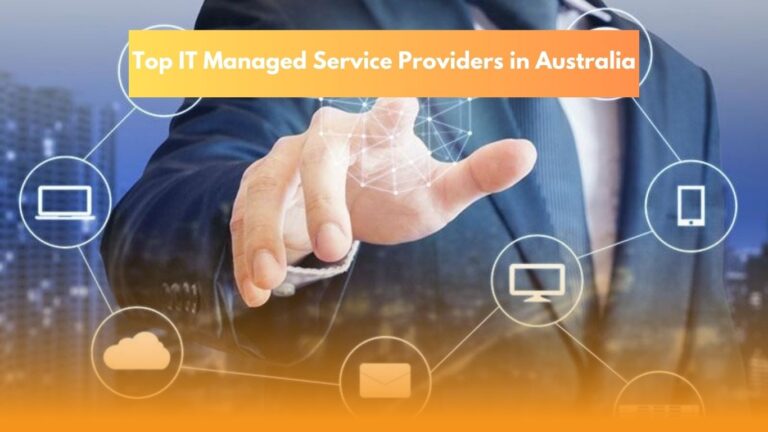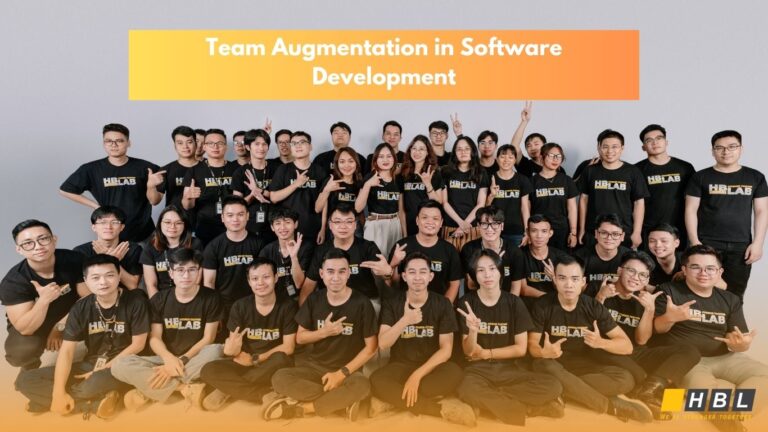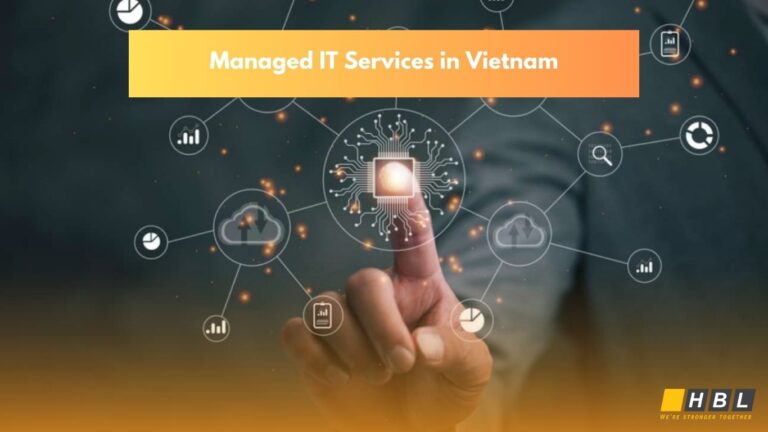Managed IT services for small business deliver comprehensive technology support, security, and infrastructure management that enables organizations to focus on core operations while ensuring reliable, scalable, and secure IT environments. This detailed guide explores every aspect of managed IT services for small business, from technical implementation and pricing models to ROI calculations and emerging AI-driven capabilities.
What Are Managed IT Services for Small Business?
Managed IT services for small business encompass a comprehensive suite of technology management solutions delivered by external service providers. These services transform how small organizations approach IT infrastructure, moving from reactive break-fix models to proactive, strategic technology partnerships. The global managed services market reached $441.1 billion in 2025 and is projected to grow to $1,314.9 billion by 2035, reflecting an 11.5% compound annual growth rate driven by increasing demand for scalable IT solutions.

Modern managed IT services for small business typically include network monitoring and optimization, server administration and virtualization, cloud infrastructure management, endpoint device management, and comprehensive patch management. These foundational services ensure that technology infrastructure operates efficiently and remains secure against evolving threats. The scope extends beyond basic maintenance to include strategic planning, capacity management, and technology roadmap development aligned with business objectives.
Managed IT support services leverage advanced monitoring tools and automation platforms to provide 24/7 oversight of critical systems. Remote monitoring and management (RMM) solutions enable real-time visibility into network performance, server health, application availability, and security posture. This proactive approach allows issues to be identified and resolved before they impact business operations, significantly reducing downtime and associated costs.
The evolution toward AI-driven IT services has transformed traditional managed service delivery models. Machine learning algorithms analyze system performance patterns, predict potential failures, and automatically trigger remediation processes. Natural language processing capabilities enhance help desk operations, while intelligent automation streamlines routine tasks such as user provisioning, software deployment, and security policy enforcement.
Technical Infrastructure Components of Managed IT Services for Small Business
Network Infrastructure Management
Managed IT services for small business begin with comprehensive network infrastructure oversight. This includes monitoring bandwidth utilization, optimizing traffic flows, and ensuring quality of service (QoS) for critical applications. Network segmentation strategies isolate sensitive systems and implement microsegmentation principles to contain potential security breaches. Software-defined networking (SDN) capabilities enable dynamic traffic routing and automated failover mechanisms that maintain connectivity during hardware failures or network disruptions.
Modern network management incorporates hybrid connectivity solutions that seamlessly integrate on-premises infrastructure with cloud resources. SD-WAN (Software-Defined Wide Area Network) technologies optimize connectivity across multiple locations while reducing bandwidth costs and improving application performance. These solutions automatically route traffic based on application requirements, network conditions, and security policies, ensuring optimal user experience regardless of location.
Scalable IT solutions in network management include automated provisioning of new endpoints, dynamic VLAN assignment, and intelligent network access control. Zero-trust network architecture principles ensure that every device and user is authenticated and authorized before accessing network resources, regardless of their location or connection method.
Server and Virtualization Management
Server administration within managed IT services for small business encompasses both physical and virtual infrastructure management. Virtualization technologies maximize hardware utilization while providing flexibility for resource allocation and disaster recovery. Hypervisor management ensures optimal performance across virtual machine environments, with automated load balancing and resource optimization based on real-time demand.
Cost-effective IT solutions in server management include server consolidation strategies that reduce hardware footprint and energy consumption. Containerization technologies enable efficient application deployment and scaling, while orchestration platforms like Kubernetes automate container lifecycle management. These approaches significantly reduce infrastructure costs while improving application availability and performance.
Advanced server management includes predictive analytics that identify potential hardware failures before they occur. Environmental monitoring tracks temperature, humidity, and power consumption to optimize data center operations and prevent equipment damage. Automated backup and recovery systems ensure data protection with minimal manual intervention, meeting recovery time objectives (RTO) and recovery point objectives (RPO) requirements.
Cloud Infrastructure Optimization
Managed IT services for small business increasingly focus on multi-cloud and hybrid cloud environments. Cloud infrastructure management includes provisioning and de-provisioning resources based on demand, implementing auto-scaling policies, and optimizing costs through rightsizing recommendations. Cloud governance frameworks ensure compliance with organizational policies while enabling self-service capabilities for authorized users.
AI-driven IT services enhance cloud management through intelligent workload placement, automated cost optimization, and predictive capacity planning. Machine learning algorithms analyze usage patterns to recommend optimal instance types, storage configurations, and geographical placement for improved performance and cost efficiency. Automated tagging and resource categorization enable detailed cost allocation and budget management.
Explore IT team augmentation solutions
Cloud security management includes identity and access management (IAM) integration, encryption key management, and compliance monitoring across multiple cloud platforms. Security posture management tools continuously assess cloud configurations against security best practices and regulatory requirements, automatically remediating misconfigured resources when possible.
Security Operations and Compliance Management
24/7 Security Operations Center (SOC) Services
Managed IT support services include comprehensive security operations that protect small businesses from increasingly sophisticated cyber threats. Security operations centers provide round-the-clock monitoring of security events, threat intelligence analysis, and incident response capabilities. Advanced SIEM (Security Information and Event Management) platforms correlate security events across multiple systems to identify potential threats and attack patterns.
Managed detection and response (MDR) services combine human expertise with AI-driven IT services to provide faster threat identification and response. Machine learning algorithms analyze network traffic, endpoint behavior, and user activities to detect anomalous patterns that may indicate security breaches. Automated response capabilities can isolate affected systems, block malicious traffic, and initiate remediation procedures within minutes of threat detection.
Endpoint detection and response (EDR) solutions provide comprehensive visibility into endpoint activities, including process execution, file modifications, and network connections. These tools enable forensic analysis of security incidents and provide detailed timelines of attack progression. Integration with threat intelligence feeds ensures that known indicators of compromise are automatically blocked and monitored.
Compliance and Regulatory Management
Managed IT services for small business address complex compliance requirements across multiple regulatory frameworks. GDPR compliance services include data mapping, privacy impact assessments, and automated data subject request processing. HIPAA compliance management ensures proper handling of protected health information through encryption, access controls, and audit logging.
SOX compliance support includes IT general controls assessment, change management processes, and segregation of duties enforcement. Automated compliance monitoring tools continuously assess system configurations against regulatory requirements and generate compliance reports for auditors. Vulnerability management programs include regular scanning, risk assessment, and remediation tracking to maintain security posture.
Cost-effective IT solutions for compliance include centralized policy management, automated evidence collection, and continuous compliance monitoring. These approaches reduce the administrative burden of compliance while ensuring consistent adherence to regulatory requirements across all systems and processes.
Pricing Models and Cost Analysis for Managed IT Services for Small Business
Per-User and Per-Device Pricing Structures
Managed IT services for small businesses typically employ per-user or per-device pricing models that provide predictable monthly costs. Per-user pricing ranges from $50 to $200 per month, depending on service levels and included components. This model covers all devices used by each user, including desktops, laptops, mobile devices, and tablets, making it ideal for organizations with mobile workforces and BYOD policies.
Per-device pricing models charge between $50 and $250 per month per managed device. This approach provides granular control over costs and is well-suited for organizations with stable device counts and limited user mobility. Server management typically commands higher per-device rates due to the complexity and criticality of server infrastructure.
Scalable IT solutions in pricing include tiered service models that allow organizations to start with basic services and add advanced capabilities as needs evolve. Entry-level tiers typically include help desk support, basic monitoring, and patch management. Advanced tiers add security services, compliance management, and strategic consulting. Premium tiers include AI-driven IT services, advanced analytics, and dedicated technical resources.
Total Cost of Ownership Analysis
Cost-effective IT solutions through managed services typically reduce total IT costs by 15-60% compared to in-house management. This reduction comes from economies of scale, specialized expertise, and automation capabilities that managed service providers leverage across their client base. The conversion from fixed to variable costs allows organizations to align IT expenses with business growth and seasonal variations.
Hidden costs in traditional IT management include recruiting and training IT staff, purchasing and maintaining monitoring tools, and managing vendor relationships. Managed IT services for small business eliminate these costs while providing access to enterprise-grade tools and expertise that would be prohibitively expensive to maintain internally.
Downtime costs average $5,600 per hour for small businesses, making uptime a critical component of ROI calculations. Proactive monitoring and automated remediation capabilities in managed IT support services significantly reduce both the frequency and duration of outages, providing substantial cost savings beyond the direct service fees.
Contact us for scalable IT solutions
ROI Calculation Framework
Return on investment calculations for managed IT services for small business include both hard and soft benefits. Hard benefits include reduced downtime costs, eliminated hiring and training expenses, and lower infrastructure costs through consolidation and optimization. Soft benefits include improved employee productivity, enhanced security posture, and faster time-to-market for new initiatives.
Productivity improvements of 25% are commonly achieved through better system reliability, faster issue resolution, and access to modern collaboration tools. Security incident prevention provides substantial ROI, as the average cost of a data breach for small businesses reaches $4.45 million. Managed IT support services significantly reduce the likelihood and impact of security incidents through proactive monitoring and rapid response capabilities.
Time-to-resolution improvements of 75% are typical with professional managed IT services for small business. This improvement reduces both direct IT costs and business impact from technology issues, enabling organizations to maintain focus on core business activities rather than technology problems.
AI-Driven IT Services and Automation Capabilities
Intelligent Monitoring and Predictive Analytics
AI-driven IT services transform traditional reactive IT management into proactive, predictive operations. Machine learning algorithms analyze historical performance data, identify patterns, and predict potential issues before they impact business operations. Predictive maintenance capabilities forecast hardware failures, capacity constraints, and performance degradation with accuracy rates exceeding 90%.
Automated incident response systems leverage natural language processing to categorize and prioritize support tickets, route issues to appropriate specialists, and even resolve common problems without human intervention. Chatbot technologies handle routine user requests, password resets, and software installation guidance, reducing help desk workload and improving response times.
Download our latest IT & AI blueprint
Scalable IT solutions include intelligent capacity planning that automatically provisions additional resources based on predicted demand. Auto-scaling capabilities in cloud environments ensure optimal performance during peak usage periods while minimizing costs during low-demand periods. These systems continuously learn from usage patterns and adjust scaling policies to optimize both performance and cost.
Automation in Security and Compliance
Security automation within managed IT services for small business includes automated threat hunting, incident response orchestration, and compliance monitoring. Security orchestration, automation, and response (SOAR) platforms integrate multiple security tools and automate complex response workflows. These systems can isolate compromised endpoints, block malicious domains, and initiate forensic data collection within seconds of threat detection.
Automated vulnerability management continuously scans systems for security weaknesses, prioritizes remediation based on risk assessment, and tracks remediation progress. Integration with patch management systems enables automatic deployment of security updates during maintenance windows, significantly reducing exposure to known vulnerabilities.
AI-driven IT services in compliance include automated policy enforcement, continuous compliance monitoring, and intelligent audit preparation. These systems maintain detailed audit trails, generate compliance reports, and identify potential violations before they become regulatory issues.
Implementation Strategies and Best Practices

Phased Implementation Approach
Successful deployment of managed IT services for small business requires a structured, phased approach that minimizes disruption while maximizing benefits. The initial assessment phase includes comprehensive infrastructure auditing, security posture evaluation, and business requirements analysis. This phase establishes baseline metrics for performance, security, and cost comparison.
The stabilization phase focuses on implementing core monitoring and management capabilities, establishing standard operating procedures, and training internal stakeholders on new processes. Basic security measures including multi-factor authentication, endpoint protection, and backup systems are deployed during this phase to provide immediate risk reduction.
Scalable IT solutions are implemented in subsequent phases based on business priorities and technical dependencies. Advanced security services, automation capabilities, and AI-driven IT services are typically deployed after core systems are stable and staff are comfortable with new processes. This approach ensures successful adoption while minimizing change management challenges.
Change Management and Staff Training
Managed IT services for small business require effective change management to ensure successful adoption and maximize benefits. Staff training programs should cover new procedures, escalation paths, and self-service capabilities. Clear communication about service level agreements, response times, and available resources helps set appropriate expectations.
Internal IT staff roles evolve from day-to-day maintenance to strategic planning and vendor management. Training programs should focus on these new responsibilities while ensuring that critical institutional knowledge is preserved and transferred to the managed service provider. Cost-effective IT solutions include developing internal capabilities in areas that provide competitive advantage while outsourcing commodity services.
User adoption programs ensure that employees understand how to effectively use new tools and services. Self-service portals, knowledge bases, and automated systems reduce support burden while improving user satisfaction. Regular feedback collection and service improvement processes ensure that services continue to meet evolving business needs.
Selection Criteria and Vendor Evaluation
Technical Capabilities Assessment
Evaluating providers of managed IT services for small business requires comprehensive assessment of technical capabilities, service delivery models, and cultural fit. Technical evaluation should include reviewing monitoring tools, automation capabilities, and security technologies. Providers should demonstrate experience with relevant industry regulations and compliance requirements.
Scalable IT solutions capabilities should be assessed through detailed discussions of growth scenarios, technology roadmaps, and service expansion options. Providers should demonstrate ability to adapt services to changing business needs without requiring complete service redesigns or significant cost increases.
AI-driven IT services capabilities include natural language processing for help desk automation, machine learning for predictive maintenance, and advanced analytics for performance optimization. Providers should demonstrate proven implementation experience and measurable results from similar engagements.
Service Level Agreement Considerations
Managed IT support services agreements should clearly define response times, resolution targets, and escalation procedures for different types of issues. Critical system outages should have response times measured in minutes, while routine requests may have longer response windows. Availability targets should align with business requirements and include appropriate credits for service level violations.
Security incident response procedures should be clearly documented with specific timelines for containment, eradication, and recovery activities. Cost-effective IT solutions include proactive monitoring and automated remediation that prevent many incidents from requiring human intervention.
Reporting requirements should include regular performance metrics, security summaries, and strategic recommendations. Monthly business reviews should assess service performance, discuss upcoming initiatives, and ensure alignment with evolving business objectives.
Cultural Fit and Communication Standards
Successful managed IT services for small business relationships require strong communication and cultural alignment. Providers should demonstrate understanding of small business challenges, flexible service delivery approaches, and responsiveness to changing requirements. Regular communication schedules should include operational updates, strategic planning sessions, and performance reviews.
Geographic considerations include local presence for onsite services, time zone alignment for support coverage, and language capabilities for effective communication. Managed IT services for small business often benefit from providers with local expertise combined with global resources and capabilities.
Long-term partnership potential should be evaluated based on provider stability, investment in technology innovation, and commitment to customer success. References from similar organizations should validate provider claims about service quality, responsiveness, and business impact.
Future Trends and Technology Evolution
Emerging Technologies Integration
AI-driven IT services continue to evolve with advances in machine learning, natural language processing, and automation technologies. Edge computing integration enables processing of IoT data closer to source systems, reducing latency and bandwidth requirements. 5G connectivity expands possibilities for remote monitoring and real-time system management.
Quantum computing applications in cybersecurity will enhance encryption capabilities and threat detection accuracy. Managed IT services for small business providers are investing in quantum-safe cryptography to protect against future quantum computing threats to current encryption standards.
Blockchain technologies enable secure, immutable audit trails for compliance management and automated smart contracts for service level agreement enforcement. These technologies reduce administrative overhead while improving transparency and accountability in service delivery.
Service Delivery Model Evolution
Scalable IT solutions increasingly incorporate microservices architectures that enable granular service customization and flexible pricing models. API-first approaches enable seamless integration with existing business systems and third-party services. Low-code and no-code platforms enable business users to create custom applications and workflows without extensive technical expertise.
Managed IT services for small businesses are evolving toward outcome-based pricing models that align provider incentives with business results. Performance-based contracts include metrics such as uptime, security incident reduction, and user satisfaction rather than traditional service delivery metrics.
Hybrid service delivery models combine automated service delivery with human expertise for complex issues and strategic guidance. Cost-effective IT solutions leverage automation for routine tasks while ensuring human expertise is available for strategic initiatives and complex problem resolution.
HBLAB – Your Strategic Partner in Managed IT Services for Small Business
HBLAB delivers comprehensive managed IT services for small business that combine proactive infrastructure management with strategic technology consulting and dedicated development capabilities. Our approach integrates 24/7 monitoring and support with hands-on engineering expertise to ensure both operational stability and strategic technology advancement. With 630+ professionals demonstrating strong English proficiency and 30% senior-level expertise (5+ years experience), HBLAB provides scalable IT solutions that adapt to growing business requirements while maintaining cost efficiency and service quality.

Our managed IT support services leverage CMMI Level 3 certified processes to deliver consistent, high-quality results across infrastructure management, security operations, and application support. Advanced monitoring platforms provide real-time visibility into system performance, security posture, and user experience metrics. Automated remediation capabilities resolve common issues before they impact business operations, while escalation procedures ensure that complex problems receive immediate expert attention.
AI-driven IT services capabilities include machine learning-based anomaly detection, predictive maintenance algorithms, and intelligent automation for routine tasks. Since 2017, HBLAB has invested in artificial intelligence partnerships with leading research institutes, enabling us to implement cutting-edge solutions for predictive analytics, automated incident response, and intelligent capacity planning. These capabilities reduce operational overhead while improving service reliability and user satisfaction.
Cost-effective IT solutions through flexible engagement models—offshore, onsite, and dedicated teams—enable organizations to optimize both service delivery and budget allocation. Our pricing models provide 30% cost savings compared to local rates while maintaining enterprise-grade security and compliance standards. Whether implementing basic managed IT services for small business or deploying advanced AI-driven IT services, HBLAB functions as a trusted extension of your IT organization, delivering measurable results across uptime, security posture, and total cost of ownership.
👉 Contact us for scalable IT solutions and a comprehensive managed services assessment
Frequently Asked Questions About Managed IT Services for Small Business
1. How much do managed IT services cost for a small business?
Managed IT services for small business typically cost between $50-$200 per user per month or $50-$250 per device per month, depending on service levels and included components. Total costs depend on the number of users, required security levels, compliance needs, and support coverage hours. Most organizations achieve 15-60% cost savings compared to in-house IT management through economies of scale and automation.
2. What are the best managed IT services for small businesses?
The best managed IT services for small businesses include 24/7 monitoring and help desk support, comprehensive security services with EDR/MDR capabilities, automated backup and disaster recovery, cloud infrastructure management, and patch management. Advanced services include AI-driven IT services for predictive maintenance, automated incident response, and intelligent analytics. Service selection should align with business requirements, compliance needs, and growth objectives.
3. How much is IT support for a small business?
IT support costs vary based on coverage requirements and service levels. Managed IT support services with business hours coverage typically cost less than 24/7 support models. Bundled services generally provide better value than hourly break-fix arrangements, which can range from $75-$200 per hour for onsite support. Monthly managed service fees provide predictable budgeting while ensuring consistent service availability.
4. What does managed IT service include?
Managed IT services for small business typically include help desk and user support, network monitoring and management, endpoint device management, server administration, security monitoring and response, backup and disaster recovery, patch management, and regular reporting. Advanced tiers add compliance management, strategic consulting, AI-driven IT services, and dedicated technical resources for special projects.
5. What is the hourly rate for an IT technician?
Independent IT technicians typically charge $75-$200 per hour, with rates varying by location, expertise level, and service complexity. However, managed IT services for small business provide better value through predictable monthly fees that include unlimited support within defined service levels. This approach eliminates hourly billing surprises while ensuring consistent service availability and response times.
6. Which company is best for IT support?
The best IT support provider demonstrates transparent service delivery, measurable outcomes, and strong cultural fit with your organization. Look for providers offering comprehensive managed IT services for small business with clear SLAs, 24/7 monitoring capabilities, robust security services, and proven experience in your industry. References from similar organizations and detailed case studies validate provider capabilities and service quality.
7. What is the lowest salary for an IT technician?
Entry-level IT technician salaries vary by location but typically range from $35,000-$50,000 annually, plus benefits and training costs. Managed IT services for small business often provide broader expertise at lower total cost than hiring full-time staff, especially when considering the need for multiple skill sets and 24/7 coverage requirements.
8. How to negotiate better IT service pricing?
Effective negotiation for managed IT services for small business includes clearly defining service requirements, comparing multiple provider proposals, and understanding pricing models. Long-term contracts often provide better rates, while bundled services offer better value than à la carte pricing. Focus negotiations on service level agreements, response times, and included services rather than just hourly rates.
9. How to get started with managed IT services?
Begin with a comprehensive IT assessment to identify current state, security vulnerabilities, and improvement opportunities. Define business requirements, compliance needs, and budget parameters. Request detailed proposals from qualified providers of managed IT services for small business, including service level agreements, pricing models, and implementation timelines. Start with core services and expand to advanced capabilities as comfort and trust develop.
CONTACT US FOR A FREE CONSULTATION
Read More:
– What is EMR System: 2025 Complete Guide to Secure, Compliant Care
– Customer Database Platforms: The Comprehensive 2025 Guide to Unified Customer Data Management
– Quality Automotive Services Market (2025): Comprehensive Industry Analysis and Statistics




